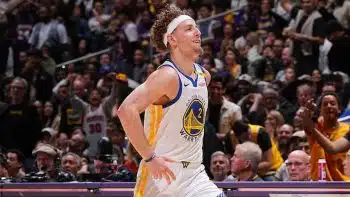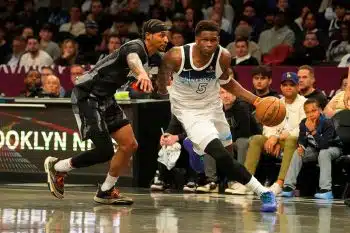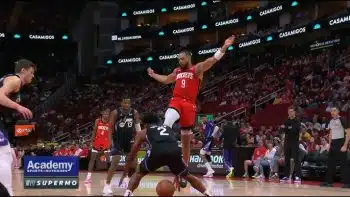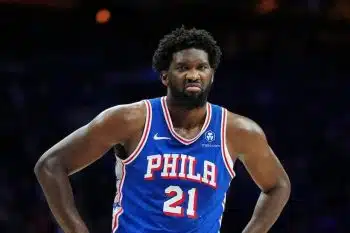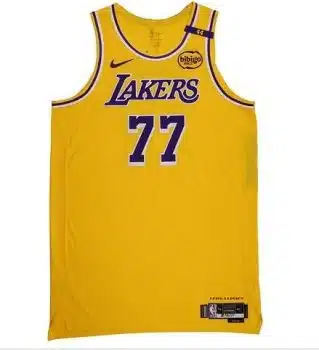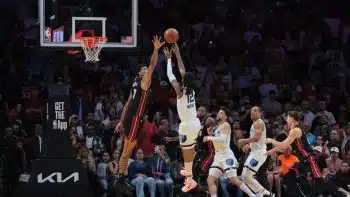NBA
The Boston Celtics and Analytical Blind Spots
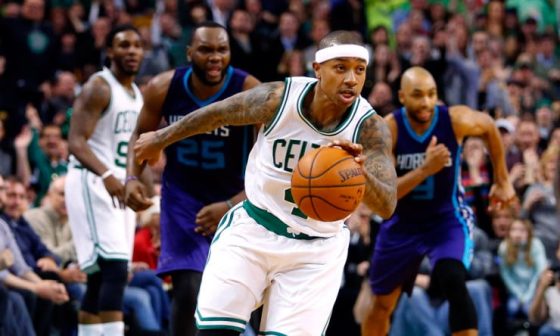
The Boston Celtics entered this season as a token guinea pig for what’s become a yearly game of tug-of-war between “analytics” people and “old-school” members of the business – a microcosm of which side is “winning.” As silly as this practice has always been (since the incredible majority of real NBA movers and shakers aren’t split along such contrived party lines and use some combination of all information available to them), the Celtics were honestly something of a perfect proxy for the Twitter wars that seem to build around a couple players or teams every year.
Many numerically-inclined observers viewed Boston as the team that differed most from popular consensus for preseason expectations. Where more traditional analysts saw a pretty similar team to last season, a well-coached outfit that wouldn’t be an easy nightly out but wouldn’t make any serious waves in the East, many predictive models saw a budding power. The Celtics were projected in the high-40 win range by multiple popular projection systems, including at fivethirtyeight and Nylon Calculus, two of several models that had them as a top-three seed in the conference.
Roughly a quarter of the way into the season, the mathematicians are coming up short – but not by as much as the raw standings would indicate, and perhaps not in the ways some would expect. The factors that led many analysts to project gaudy totals have held true in some cases, but have fallen well short in the ones that may define the larger picture.
Much of what drove the positive end of projections was depth. The Celtics entered the year with a minimum of nine guys on the roster who did well in at least one major predictive metric, and this aggregation drove the way models viewed them. And in a broad sense, this has been at least partly correct. Boston may only be 14-11 and occupying the same seventh seed they ended up with last season, but their underlying metrics indicate a stronger cumulative team – the Celtics are seventh in the NBA for adjusted net rating, per basketball-reference.com, and sixth for both margin of victory and the same site’s Simple Rating System (averages point differential and strength of schedule).
Depth is nothing if used incorrectly, and the Celts may only be keeping things close due to coach Brad Stevens. A regular chess master at work, Stevens is already one of the best in the game at identifying the exact niche his players will best occupy, then fitting them into it in concert with game context and situational awareness. A quick glance at his most frequently used lineups on the year reveals the degree to which he’s been comfortable mixing and matching – you have to go scroll down to Boston’s ninth-most used five-man unit to find one that’s been outscored per-possession on the year, but nine different players are present in at least one of these top eight groups.
Finding even a minor misuse of talent on Boston’s roster is a chore. Isaiah Thomas operates optimally with the ball frequently in his hands and savvy screeners on the floor; he plays most in these exact alignments (Marcus Smart’s injury shook things up a bit here, to be fair). Kelly Olynyk has defensive limitations; he almost never sees time in units that could expose these to too great an extent. Shoot, Stevens has made a near-capable swingman out of Evan Turner, written off in many NBA circles more than once over the last few years.
The Celtics play smart ball that leverages their advantages and works to minimize their weaknesses. Their percentage of assisted baskets is among the highest in the league, a nod to Stevens’ precise scheme that does its best without anything even approximating a true offensive centerpiece. They’re not a good rebounding team overall mostly due to personnel, but crash the offensive glass smartly and selectively – they “chase” the sixth-highest percentage of their own misses in the league, per Nylon Calculus data, but allow the fourth-fewest transition points against, a sign that they’re conscious of the trade-off and not being destroyed by it.
Boston is a bad shooting team, plain and simple. They’re dead last in the league for shooting percentage on open jumpers outside 10 feet (no defender within four feet), per NBASavant, even trailing the Philadelphia 76ers. There’s only so much Stevens, or any coach, can do to mitigate this, though he has his team at a defensive level one can hardly imagine possible for this group of players, which helps a lot.
The shooting issues, and really any areas of individual deficiency up and down the roster, are where cracks started to form in the predictive analysis of the team. Models can account for the fact that the Celtics don’t cumulatively have great shooting, of course, but it’s much tougher for them to define the way specific pieces will combine in ways that can help make up for that kind of issue elsewhere. It’s the entire crux of many folks’ issue with the numbers revolution in the first place: You can never totally quantitatively account for the way a group of pieces fits together.
The common line of thought goes that Boston hasn’t hit pay dirt until they land a true star, but this is backward. In reality, the question ought to be, “Can the Celtics beat star-driven teams?” Can the unique makeup of their roster that saw so many projections high on them be effectively molded into an incarnation that can challenge the LeBrons, Stephs and Durants of the league?
This is where they’ve been underwhelming to this point, and where it becomes realistic to wonder about placing a team like this in the same category as some of the elite teams, or even close. A collection of good to great talent is nice, but only five guys can be on the NBA court at one time – in a more specific context with a smaller sample, that depth starts to matter much less than the advantage a guy like LeBron brings over any of the five Boston can put on the floor.
A few games shouldn’t define this theme, but some recent results have given opponents of the predictive models a lot of ammo. The Celts were the more disciplined and often better team in a process-driven sense Tuesday night against the Cleveland Cavaliers, but were still run off the court by a group with a level they just couldn’t get to. Losses to the Golden State Warriors (by five) and the San Antonio Spurs (by three) in the last couple weeks have seen similar trends. The Celtics have underachieved their Pythagorean win expectation by two already on the year – a sign that they’ve lost a couple games their overall point differential indicates they should have won. Boston is 9-1 against sub-.500 teams and just 5-11 versus winning ones.
Look, this isn’t any kind of condemnation of any predictive modeling, or these models in particular. Their creators would all be quick to say that nothing in their projections was so outlandish as to suggest the Celtics were title contenders, or that they should regularly be butting heads with the elite teams in the league and coming out on top. As the smart statisticians they are, the makers of the above-noted models even went to lengths to note the possibility of this sort of gap between projections and reality. It’s also still easily early enough for small sample to be mentioned.
There’s absolutely nothing wrong with the way Danny Ainge has assembled this team, especially given that his greatest assets in the chest aren’t even on-court ones. The Celtics would be as well-positioned as any team in the league if, say, DeMarcus Cousins became available for a gigantic package. This current iteration is by no means the final result of the work Ainge and his team have done in recent years.
Still, should some of these underlying trends continue over a longer stretch with the current group, they’re a convenient reminder to all of us that basketball is much more than a collection of assets that accumulates to one final tally. The models can struggle with items like chemistry and roles, among other details. While there’s a gigantic chasm between this reality and the “analytics are useless” garbage only clowns are still spewing, it’s good to be reminded every now and then that even the most expertly curated stat-based analysis will have blind spots.
